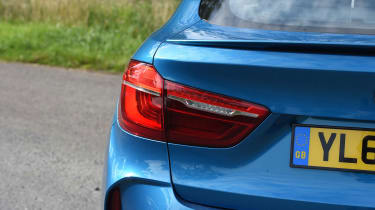BMW X6 (2014-2019) review - MPG, CO2 and Running Costs
Diesels are more frugal but the BMW X6 is still not a cheap car to run

Running a large premium SUV like this is never going to be cheap, but fuel consumption isn’t bad given the performance on offer. The most efficient model is the xDrive30d, which has a fuel economy return of up to 33.6mpg on the latest WLTP test cycle and emissions of 183g/km.
The xDrive40d doesn’t cost much more to run with figures of up to 33.2mpg and an identical 183g/km, and you’re unlikely to notice much of a difference between the two on the road. The M50d returns 30.1mpg and 205g/km of CO2, which isn’t bad when you consider the huge amount of extra power.
As you’d expect, the X6 M is very thirsty. It hasn't been tested under WLTP conditions, but its old NEDC figures of 25.4mpg and CO2 emissions of 258g/km, are faintly shocking. The brutal acceleration is addictive too, so realistic fuel consumption could well be even higher.
Insurance groups
As with fuel economy and road tax costs, insurance is never going to be a cheap thing with a car of the X6’s price, specification and power.
Insurance groups start at 41 for the X6 xDrive30d and increase to 44 or 45 for the xDrive40d. You’re looking at group 48 for the M50d and 50 (the highest insurance group of all) for the top-end X6 M.
That isn’t uncommon at this end of the market though, as the Audi Q8 is in group 48, the Range Rover in group 45 and the Porsche Cayenne starting from group 44.
Depreciation
SUVs with premium badges such as the X6 are generally desirable and hang on to their value comparatively well, but the X6 bucks that trend somewhat. It has residual values in the region of 35-43 per cent, which reflects its high running costs and its relative age on the market. Newer cars like the Audi Q8 fare better (53 per cent) and the Mercedes GLE Coupe is in the 44-48 per cent band.








